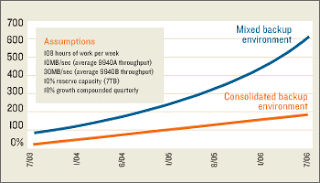
Things are looking up for Linux PCs (even though its share in the OS market still is small) and "computing in the cloud." Good OS, the open source startup that introduced gOS, a Linux operating system with Google and Web applications, on a $199 Wal-Mart PC last November, now says announced that gOS Rocket will be introduced January 7. Think of gOS Rocket as a low-cost Linux-powered notebook that is optimized as a Web device.
Note also that the Asustek Eee PC--also a Linux machine-- was among the top-ten notebook PCs sold by Amazon over the Christmas season, and was ranked at the top of wish lists compiled by Web site CNet. Asustek executives say demand was so strong forthis Christmas season that virtually all available units were bought just about as soon as they were put on the shelves.
“In the two weeks since its launch in the US, the Eee PC has already sold ten thousand sets,” says Sunny Han, ASUS director. Asustek fully expected to finish 2007 by meeting its sales goal of 350,000 units, and is planning for sales in 2008 of three to five million.
Rocket comes with Google Gears, the online-offline synchronization technology from Google that enables offline use of web apps.
gOS Rocket also features gBooth, a browser-based web cam application with special effects, integration with Facebook and other Web services; shortcuts to launch Google Reader, Talk, and Finance on the desktop; an online storage drive powered by Box.net; and Virtual Desktops, an intuitive feature to easily group and move applications across multiple desktop spaces.
At the center of Rocket's new desktop is a gorgeous Google search box, enabling users to perform Google searches directly from the desktop. This new feature launches Google search results in Firefox, the leading, open source web browser. Surrounding the Google search box is an attractive desktop environment comprised of new wallpaper, icons, digital clock, and other new desktop elements.
"Like most of our customers, we absolutely love the gorgeous design and simplified navigation that gOS provides," says Paul Kim, director of marketing for Everex. "With the release of Rocket, the gOS team has once again shown the industry how to make a great looking operating system intuitive and easy to use."
Rocket includes Google Gears to enable offline use of web apps. Google Reader, which allows you to read all your news and blogs in one place, is the only Google application to currently work offline with Google Gears and has been added to the gOS desktop. Launching Firefox will reveal a new custom gOS homepage that prominently features a continually updated list of web apps that work with Google Gears to allow offline access.
Separately, researchers at Informa predict that, by 2012, Linux will ship annually in 128 million mobile phones, or about 8.8 percent of all handsets sold. The report also forecasts a bright outlook for other open source mobile technologies, including Java, WebKit, and others.
According to the report, Linux in 2006 was the second most popular OS for smartphones sold worldwide. During that year it shipped in about 11.7 million handsets, the "vast majority" of which went to customers in Asia. Uptake in Europe and North America during 2007 is forecast to drive overall shipments close to 20 million, or about 17.3 percent of the smartphone market. From there, shipments are expected to nearly quadruple by 2010, reaching 27 percent of all smartphones by 2012.







